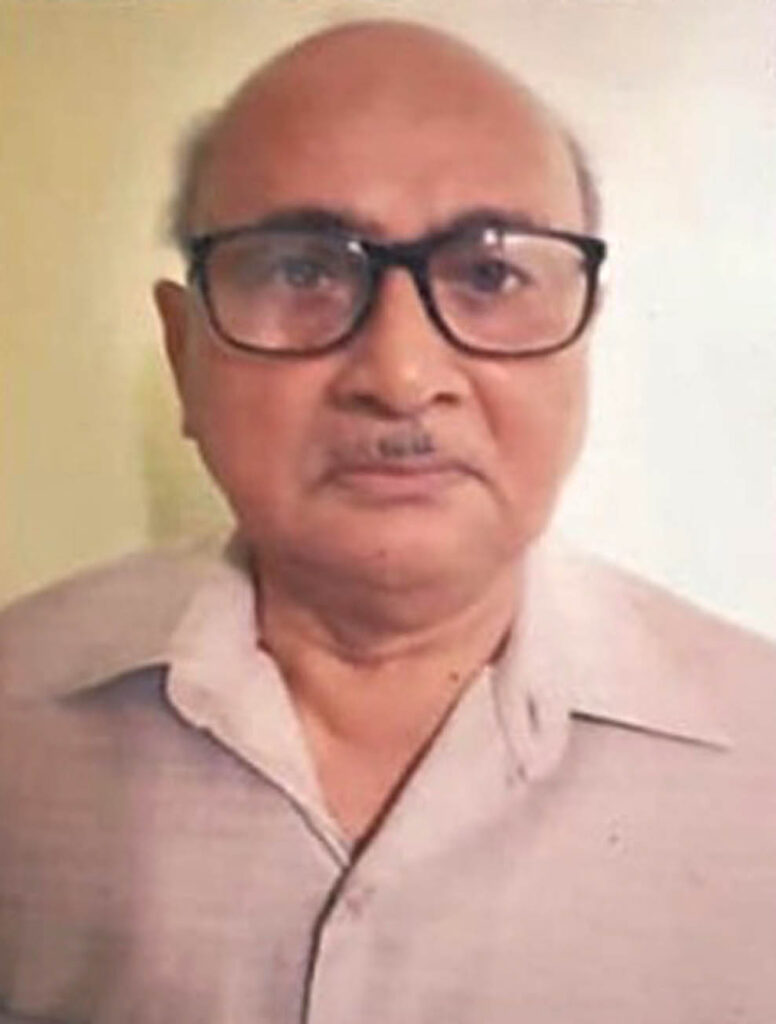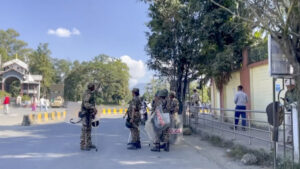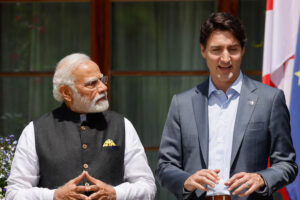HUMAN RIGHTS IN THE OBSERVANCE OF GENDER EQUALITY.

-Dilip Kumar Daschaudhuri
The term ‘Sex’ and ‘Gender’ are often used interchangeably in everyday life, but in sociological literature they are frequently differentiated. The term ‘sex’ is applied to differences between men and women that are based on biological differences such as anatomy, physiology, hormones and chromosomes, and in this respect people are male and female.
The term ‘gender’ is applied to the cultural aspects of male and female roles. In other words the behavior, personality and other social attributes that are expected of males and females, and these social attributes become the basis of masculine and feminine roles. Sexuality and the different capacities of men and women in the reproductive process are particularly likely to think of as giving natural reasons for gender divisions in society.
Gender based discrimination, represents ugly face of the society. This issue is global with varying degree and very old. Really, it is a travesty of all canons of social justice and equality that women who constitute half of the World’s population and work two third of World’s working hours should earn just 1/10th of World’s property and also should remain victim of inequality and injustice. This anomaly is, now being openly questioned and the underlying discrimination is seriously challenged. As human development moves centre- stage in the global development debate, gender equality and gender equity are emerging as major challenges. Gender discrimination, though amongst the most subtle, is one of the most all pervading forms of institutionalized deprivation.
The causes of gender inequality are complex, linked as they are to the intra-household decision making process. However, the decisions are made, the intra-household allocation of resources is influenced by market signals and institutional norms that do not capture the full benefits to the society of investing women. Low levels of education and training, poor health and nutritional status, and limited access to resources depress womens’ equality of life and creates hurdle in economic efficiency and growth. Regional perspectives play a very important role in the realm of gender equality.
The principle of gender equality is enshrined in the Indian Constitution in its ‘Preamble’, ‘Fundamental Rights’, ‘Fundamental Duties’ and the Directive Principles, equality of status and of opportunity; and to promote them all is the philosophy of the Indian Constitution as mentioned in the Preamble. In the Fundamental Rights Chapter, the rights of equality guaranteed, inter alia, are- ‘equality before the law and equal protection of law’ (Article 14), ‘Prohibition of discrimination on the ground of sex’ (Article 15), ‘Equality of Opportunity in the matter of public appointment’ (Article 16), no discrimination of the rights regarding the freedoms under Article 19 and ‘Right to Education under Article 21 A. In the part of the Directive Principles of State Policies, it has been made duty of the State to apply the principles in making Law which are fundamental in the Governance of the country. To ensure equality provisions are made for free legal aid, just and humane conditions of work and maternity relief, living wage etc for workers.
The Protection of Human Rights Act 1993 was enacted by the Parliament in 1994. To justify the emergence of said enactment, in the statement of objects and reasons it is mentioned as thus-
“1. India is a party to the International Covenant on Civil and Political Right and the International Covenant on Economic, Social and Cultural Rights, adopted by the General assembly of the United Nations on the 16th December 1966. The Human Rights embodied in the aforesaid two Covenants stand substantially protected by the Constitution.
2. However, there has been growing concern in the country and abroad about issues relating to human rights. Having regard to this, changing social realities and the emerging trends in the nature of crime and violence Government has been reviewing the existing laws, procedure and systems of administration of justice with a view to bring about greater accountability and transparency in them and devising more efficient methods of dealing with the situation”.
Keeping in view of the above objects, several provisions are made in the said Act among which the most important is putting a definition to the term ‘human right’ under section 2(d) which speaks- “Human Right means the rights relating to life, liberty, equality and dignity of individual guaranteed by the Constitution or embodied in the International Covenants and enforceable by the Courts in India.” Under Section 2(f) of the said Act ‘International Covenants’ has been meant as the International Covenants on Civil and Political rights and the International Covenant on Economic, Social and Cultural Rights adopted by the General Assembly of the United Nations on the 16th December 1966.
It is pertinent to look into the above two International Covenants as to what rights are enshrined there to guarantee the gender equality in particular.
INTERNATIONAL COVENANT ON CIVIL AND POLITICAL RIGHTS
“Article 3. The States Parties to the present Covenant undertake to ensure the equal right of men and women to the enjoyment of all civil and political rights set forth in the present Covenant.”
‘Article 23. -1. The family is the natural and fundamental group unit of society and is entitled to protection by Society and State.
2. The right of men and women of marriageable age to marry and to found a family shall be recognized.
3. No marriage shall be entered into without the free and full consent of the intending spouse.
4. The States Parties to the present Covenant shall take appropriate steps to ensure equality of rights and responsibility of spouses as to marriage, during marriage and its dissolution. In case of dissolution, provision shall be made for the necessary protection of any children.”
“Article 25.- Every citizen shall have the right and opportunity without any of the distinctions mentioned in Article 2 and without any unreasonable restrictions:-
(a) to take part in the conduct of public affairs, directly or through freely chosen representatives;
(b) to vote and to be elected at genuine periodic elections which shall be by universal and equal suffrage and shall be held by secret ballot guaranteeing the free expression of the will of the voters;
(c) to have access, on general term of equality, to public service in his country.”
“Article 26.- All persons are equal before the law and are entitled without any discrimination to the equal protection of the law. In this respect, the law shall prohibit any discrimination and guarantee all persons equal and effective protection against discrimination on any ground such as race, colour, sex, language, political or other opinion, national or social origin, property, birth or other status.”
INTERNATIONAL COVENANT ON ECONOMIC, SOCIAL AND CULTURAL RIGHTS
“Article 3.- The States Parties to the present Covenant undertake to ensure the equal right of men and women to the enjoyment of all economic , social and cultural rights set forth in the present Covenant.”
“Article 7.- The States Parties to the present Covenant recognize the right of everyone to the enjoyment of just and favorable conditions of work, which ensure, in particular :-
(a) remuneration which provide all workers as a minimum, with :
i) fair wages equal remuneration for work of equal value without distinction of any kind, in particular women being guaranteed condition of work not inferior to those enjoyed by men, with equal pay for equal work;
ii) a decent living for themselves and their families in accordance with the provisions of the present Covenant;
(b) Safe and healthy working conditions;
(c) Equal opportunity for everyone to be promoted in his employment to an appropriate higher level, subject to no considerations other than those seniority and competence;
(d) Rest, leisure and reasonable limitation of working hours and periodic holidays with pay as well as remuneration for public holidays.”
There are several other rights included in the above two International Covenants which are recognized as human rights under the Protection of Human Rights Act ensuring indiscrimination to the enjoyment of such rights equally by men and women. In order to carry out the directives of the Constitution of India and above two International Covenants in regard to safeguard the equal opportunities of women and their empowerment, the Indian Legislature framed Laws, inter alia, the following:
(a) Commission of Sati (Prevention) Act 1987
(b) The National Commission for Women Act, 1990
(c) The Pre-Natal Diagnostic Techniques (Regulation & Prevention of Misuse) Act 1994
The principles of gender equality although received universal acceptance, but the causes of persistent disparity and inequality between men and women are only partially examined, explored and understood. The decision making process within household is complex and is influenced by social and cultural norms and institutional factors. One of the fundamental obstacles to promote gender equality in development remains at the community level where attitudinal biases often prevent women from realizing and understanding their rights. The Executive has not done enough to take on board these obstacles. State actions are not consistent and backed up. Mere enactments of laws are not enough to eradicate decade long inequalities and discriminations between men and women. The State machineries and the stakeholders entrusted for execution of the provisions of such social laws are to be trained up, motivated and activated with the participation of community at large. It is a continuous process of people’s movements.
(Former District Judge, Secretary to the Tripura Legislative Assembly and State Information Commissioner, Tripura Information Commission)






